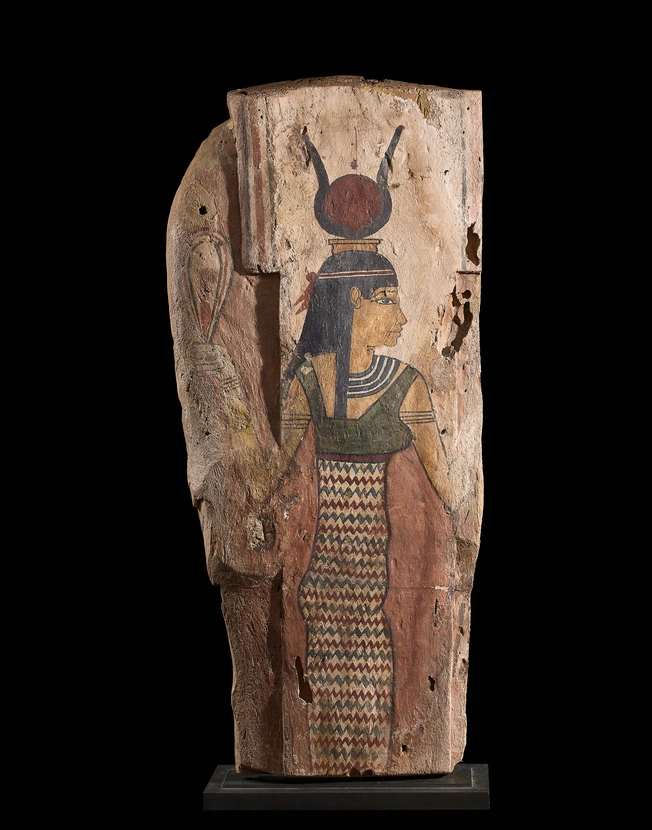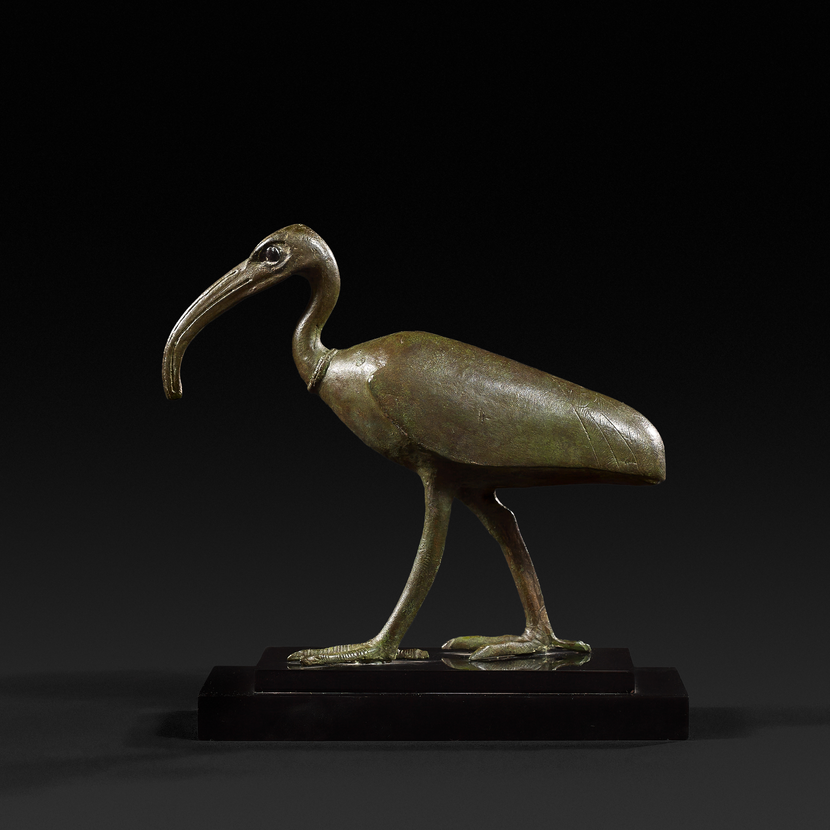Sarcophagus backpanel
The goddess Isis-Hathor-Nut, wearing a long tight dress, is shown facing right with her arms bent upwards. She is adorned with a large Usekh collar and holds a folded cloth in each hand. She wears a tripartite wig surmounted by the Hathoric crown, a crown consisting of the solar disk between cow horns, placed on a modius.
This fragment is the upper part of the exterior of the coffin, which incorporates a dorsal pillar in the form of a Djed pillar, a symbol associated with Osiris and stability.
Egypt
Late Dynastic Period , XXVI-XXX Dynasty, 663-300 BC
Wood with original gesso and polychrome painting
Height 103 cm ( 40 1⁄2 in )
Width 47 cm ( 18 1⁄2 in )
Former Private collection Germany, acquired circa 1980
O. Koefoed-Petersen: Catalogue des sarcophages et cerceuils egyptines, Copenhague 1951
A. Küffer: Die Bedeutung des Sarges, Suiss Coffin Project 2012
K.M. Cooney: Coffins, Cartonnage, and Sarcophagi, John Wiley & Sons 2015
The goddess Isis-Hathor-Nut, wearing a long tight dress, is shown facing right with her arms bent upwards. She is adorned with a large Usekh collar and holds a folded cloth in each hand. She wears a tripartite wig surmounted by the Hathoric crown, a crown consisting of the solar disk between cow horns, placed on a modius.
This fragment is the upper part of the exterior of the coffin, which incorporates a dorsal pillar in the form of a Djed pillar, a symbol associated with Osiris and stability.
Hardly any other nation in human history has dealt as extensively with the afterlife and, as a result, arranged such elaborate burials as the ancient Egyptians. According to their beliefs, human existence is not ended by death, which is considered a part of the created world order. Instead, death is seen as a threshold to a new, eternal form of existence.
The coffin had two important functions: on the one hand, to protect the embalmed body from decay, which was a crucial prerequisite for the individual's continued existence in the afterlife; on the other hand, its shape, iconography, and inscriptions carried different religious meanings in various periods.
After the abandonment of decorated individual tombs in the last millennium of ancient Egyptian culture, the anthropomorphic coffin took on an additional function, replacing the indispensable images and texts that had previously adorned tomb walls. These compressed image-text compositions - containing spells from the centuries-old funerary literature - were intended to unleash their magical power in the afterlife and help the deceased attain a pleasant existence in the "Fields of Eternity." A multitude of deities watched over the integrity of the deceased.






